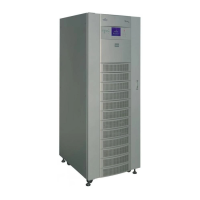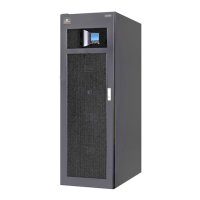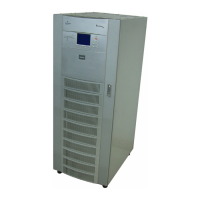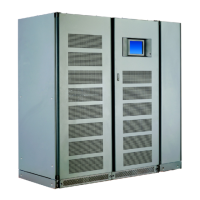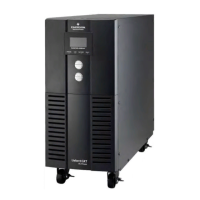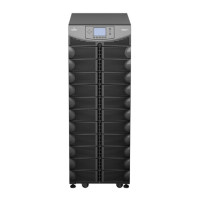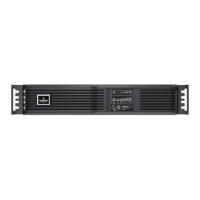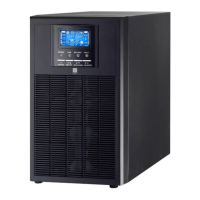Battery Installation
16
2.0 BATTERY INSTALLATION
2.1 Introduction
The UPS battery bank consists of battery blocks connected in series to provide a D.C. string voltage as
required by the UPS converter. The 'AUTONOMY TIME' (the time during which the battery can
maintain supply to the load in the event of a mains failure) is limited by the ampere-hour capacity of
the battery blocks and in some cases this results in several strings being connected in parallel.
The NX usually has internal batteries, but longer run time is available by using an external battery
cabinet.
The battery cabinet will be supplied in one of the following forms:
1. Complete installation, comprising the battery cabinet, batteries and protective device.
2. Battery cabinets and protective device only—batteries supplied by others
The battery bank may be disconnected from the UPS for maintenance or service. Contact your local
Liebert representative for battery run times.
2.2 Safety
Special care should be taken when working with the batteries associated with the Liebert NX UPS
system. When all the cells are connected together, the battery terminal voltage is potentially hazard-
ous. The battery installation must be segregated from all but appropriately qualified maintenance
personnel by locating the cells in a key-lockable cabinet or in a purpose-designed, dedicated battery
room. When the batteries require maintenance, these precautions must be taken:
• The rotary switch must be turned to Maint. position.
• The input circuit breaker (CB1) must be opened.
• The ANDERSON connector must be disconnected..
NOTE
10kVA to 20kVA UPS models contain an internal battery compartment that can accommodate
up to 44 blocks of batteries for 12Ah/12V; 80 blocks of batteries for 7.2Ah/12V
NOTE
The fuse on the battery EMI board (UHK241A2 PCB) is 600VDC/30A, High Speed Fuse.
NOTE
Full safety instructions concerning the use and maintenance of UPS batteries are provided in
the appropriate battery manufacturers manuals. The battery safety information contained in
this section relates to key considerations that must be taken into account during the
installation design process and might affect the design outcome depending on localised
conditions.
